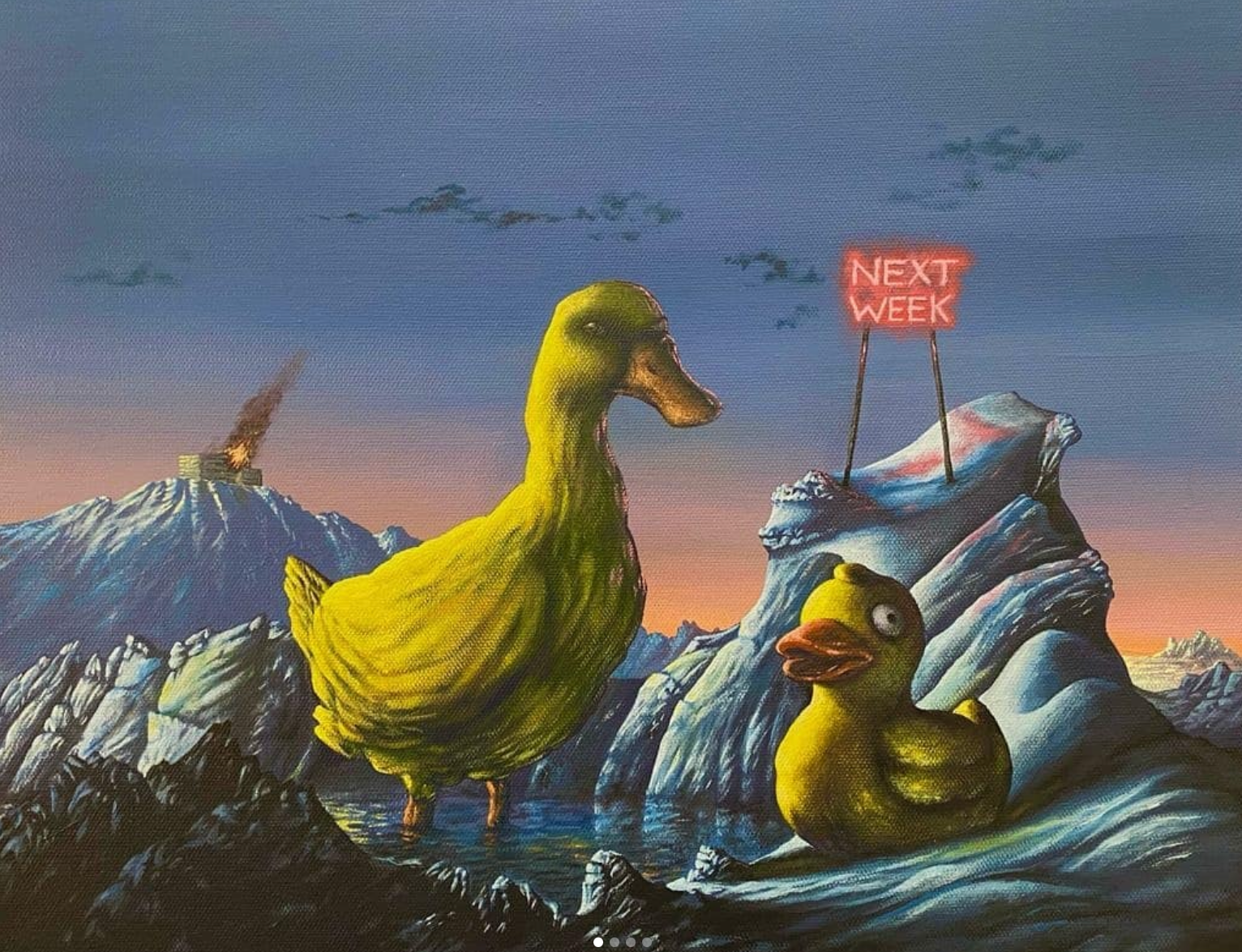Francisco Carmena Sánchez
From Toledo, Spain, in 1996, I am a visual artist and my work revolves around the field of Painting, Drawing and Sculpture. From the beginning, I showed my position towards Surrealism or Lowbrow, being noticeable in my first artistic projects.
Could you tell us more about your background and how you began creating art?
In general, I have always been connected to art, ever since I was a child, in one way or another, by drawing, painting or sculpture. It has always been a passion, something I have always taken interest in. Most of it could be seen as an early addiction from the world of comics and drawing, and I had it as an inspiration to create my own worlds and scenarios. Although I soon started to express my thoughts and ideas through painting and sculpture. University was the place where I started to work around possible scenarios of the future, which is one of the main elements of my paintings and sculptures. It is here, at the university, and by further studying artists, such as Dalí, Magritte, De Chirico and the Surrealist movement in general, that I began to further develop my line of artistic work. However, I consider that my origin plays an important role in my works, given that I grew up in Toledo. More specifically in a town in La Sagra, an area in central Spain that stands out for its narrow and arid landscapes. The scenarios I make tend to have these features. In the same way, my stay in Norway on several occasions made me appreciate the rugged landscapes of the country. This, combined with my study of Norwegian artists, such as Johan Christian Dahl, influenced the presence of these mountainous landscapes in my pieces.
What does your art aim to say to its viewers?
In my paintings, I show different thoughts and dystopian versions of contexts and current situations in the world. With this, I create a different and ironic point of view on current problems. However, I tend to emphasize climate change and issues, such as massive consumption, through large-scale everyday objects and neon signs. Which are a presentation or a reflection on our modern society. Through these elements, I usually convey messages or icons that are present in our everyday life through a larger scale and highlight negative aspects that will not stop repeating themselves. On the other hand, I sometimes work with the representation of classical statues and sculptures that contain hidden messages or that try to make reference to the fact that nature and our environment can only be seen as one more element of what, in a distant past, was a part of our environment. In addition to this, I usually work with the representation of animals and their symbolism in history and in different cultures. In such a way that their representations are altered by traits and characteristics that they do not have in their original state.
Can you tell us about the process of creating your work? What is your daily routine when working?
I normally start by writing some concepts I have in mind. They usually come from works, books or movies that I have watched recently. I then later draw them and made some sketches. This part is fundamental because from these initial drawings I develop the entire base of my work. That is when I take ideas to canvas and to the materials to start with painting or sculpture, although sometimes the work process occurs more spontaneously. That being said, my routine is somewhat flexible, since sometimes I do not just work on a single project. As I said, it can depend a lot on the moment and my research on certain topics. Because of this, I often find myself immersed in the process of working on several projects at the same time.
What is the essential element in your art?
In my opinion, the sunsets and shadows that I represent have a vital importance in my art, through them I manage to create the mysticism I want to present where it seems like something is about to happen. It is true that there are various symbols and elements that are of great importance in all my pieces (neon signs, various landscapes, etc...) however I consider this factor to be the most important in all of my work.
In your opinion, what role does the artist have in society?
Undoubtedly, the artist is capable of providing a differential point in society on issues or troubles.
An artist’s work can open people’s eyes to see more than what may be presented in their everyday lives. Not only that, but the way of doing it can be incredibly beautiful. In this way the artist can show themselves as a messenger, as someone who tells a personal story in multiple and brilliant ways. That is precisely what is magnificent about this figure, the variety of roles and the importance they can have. All of this makes the presence of the artist in our society essential.










